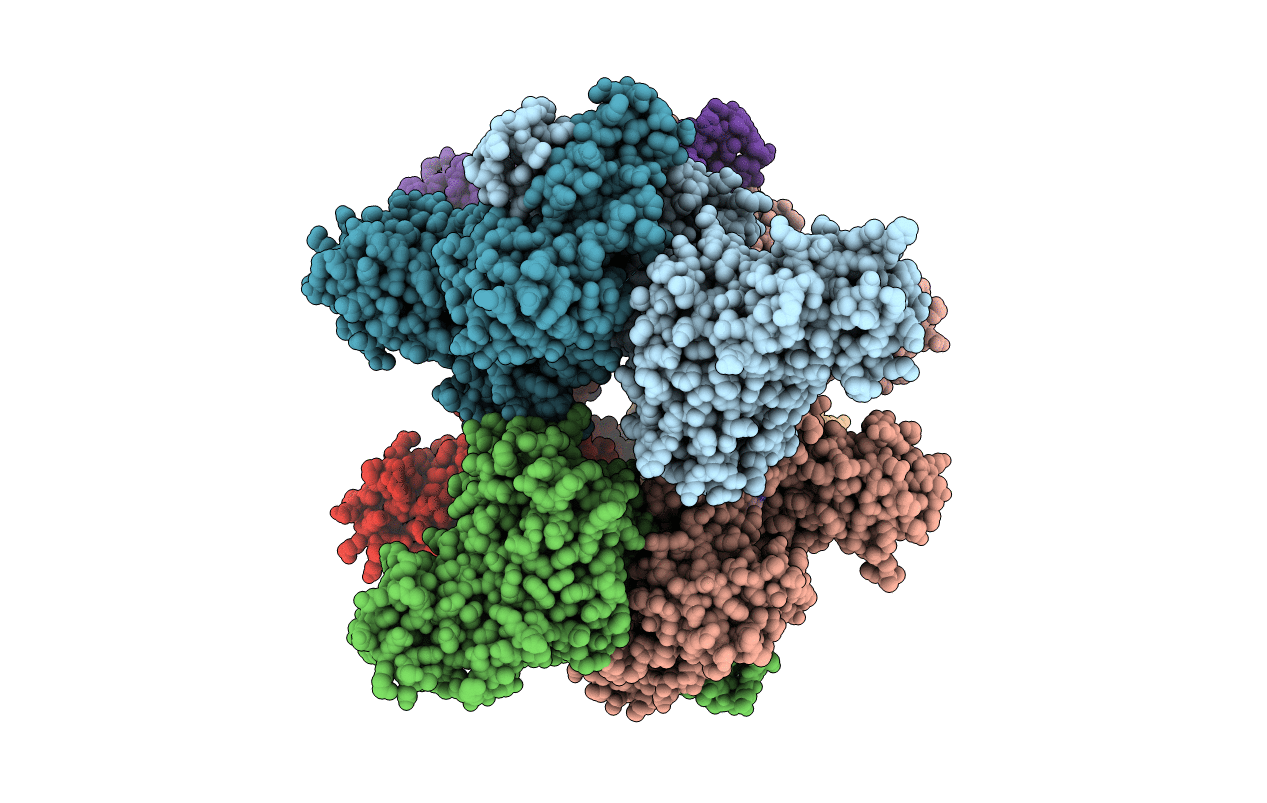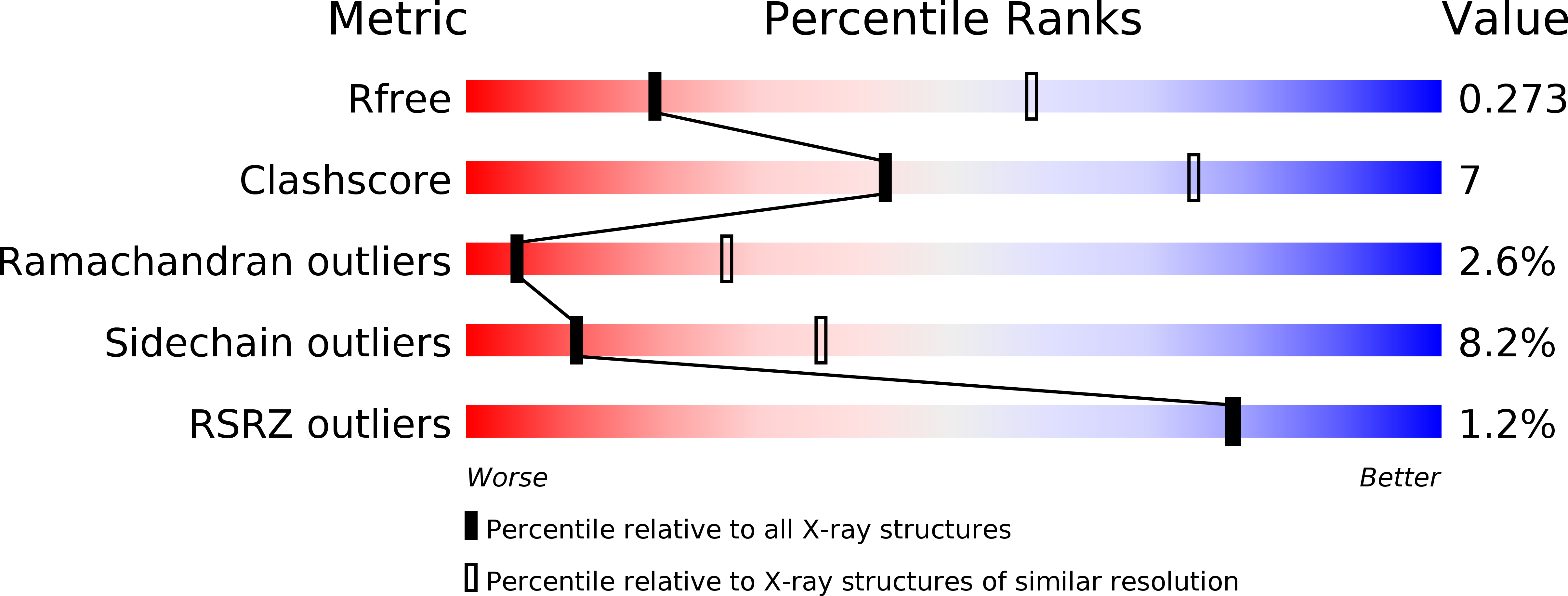
Deposition Date
2012-05-05
Release Date
2013-03-20
Last Version Date
2024-02-28
Entry Detail
PDB ID:
4F0X
Keywords:
Title:
Crystal structure of human Malonyl-CoA Decarboxylase (Peroxisomal Isoform)
Biological Source:
Source Organism:
Homo sapiens (Taxon ID: 9606)
Host Organism:
Method Details:
Experimental Method:
Resolution:
3.29 Å
R-Value Free:
0.26
R-Value Work:
0.24
R-Value Observed:
0.24
Space Group:
P 1


